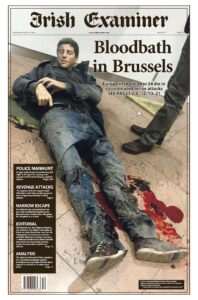
This striking NASA/ESA Hubble Space Telescope image captures the galaxy UGC 477, located just over 110 million light-years away in the constellation of Pisces (The Fish)
These lines from an Irish Examiner editorial this week are quite sobering but it’s something I’ve experienced in my own not-quite 40 years on this blue dot hurtling through space.
I grew up at a glorified crossroads and don’t remember many streetlights, if any, though there were possibly some in a group of houses nearby. It was dark enough that as a family we could sit out at night and watch meteor showers from a bench in the garden. That, I remember, was a very cold night but it was still a wonder to just stare up at the night sky and see the streaks of light. And when there weren’t meteors there were simply the stars to look at.
We moved to a more urban area when I was 12 or so and as time has gone on the skies I’ve lived under (Waterford, Abu Dhabi, various places in Cork) have been more brightly lit and cluttered.
Have you ever been to a dark site — a *truly* dark site — and gaped in awe at the glow of the Milky Way overhead, with thousands of stars gleaming down on you?
It’s an awe-provoking experience, numinous in impact.
And every day, bit by bit, it’s being stolen away from you.
— Phil (SubStack link in bio) Plait (@BadAstronomer) February 6, 2023
But one counter moment stands out. In a previous life, an academic life, I spoke at various conferences and symposiums on medieval studies (I will eventually get around to publishing some of those old papers here). One was hosted at Glenstal Abbey in Limerick. This may seem like an odd place to have a medieval symposium but some of the brothers there are experts on various aspects of medieval history. The silent lunch was weird, plenty of clattering cutlery while a monk read a homily in the corner, but I digress.
We stayed overnight and, as you do, wandered down as a group to a pub nearby. Although when I say “nearby” I mean “a fair walk away”. Our contingent stayed out beyond the curfew before walking back to our rooms.
We had arrived there while there was still some daylight. We left there in pitch darkness.
But the stars, dear reader. For the first time in I don’t know how long there were absolutely no streetlights or house lights to interfere with the stars. It was like seeing them for the first time, thousands and thousands of them. It was like having your soul refreshed.
When my wife and I moved to our house in an estate outside Cork City, we did, for a time, have a clearer sky. We lived in an unfinished part of the estate and there were no streetlights, so we could see a great many stars or planets looking out. They’re mostly gone now though. The estate is finished, and with it comes strong lighting. An enormous housing estate has been built in what were once fields wrapping around ours, blasting various shades of light into the cosmos as we constantly try to show mastery of the world by pushing back the dark.
Now, on a good night, you can still see some of the constellations, such as Orion, but the general milieu is more or less hidden. I hope some day to be able to stand out on a dark night and recapture that sense of wonder, a sense I detect in my children. We can but hope.



